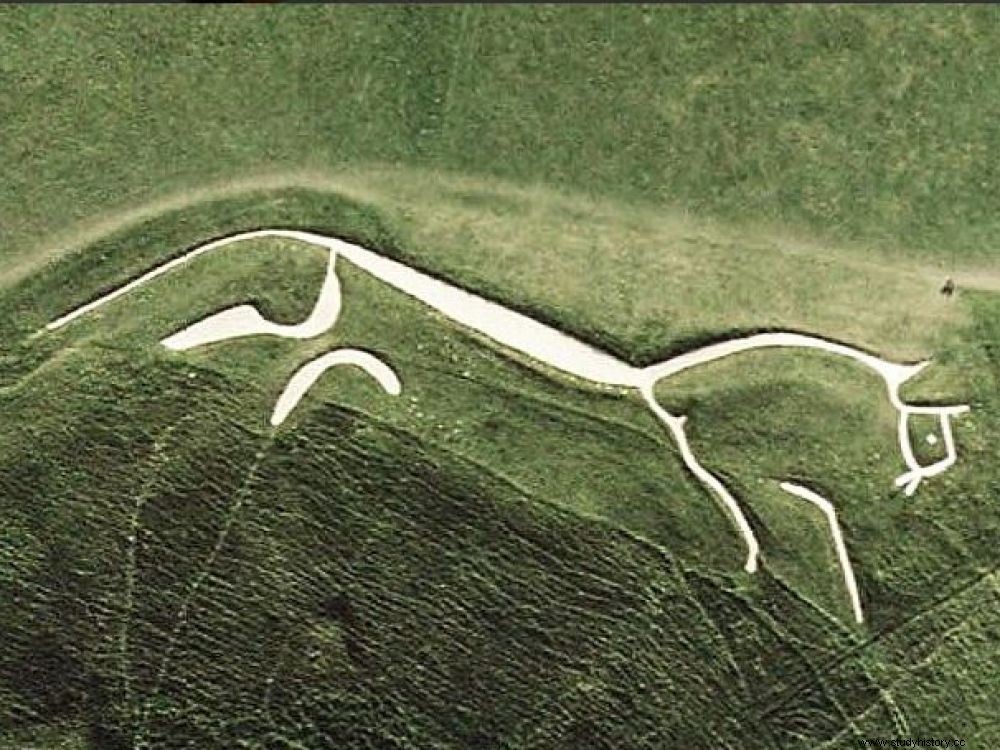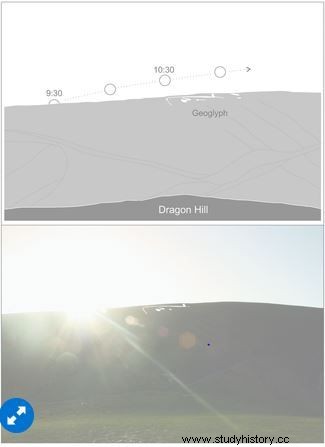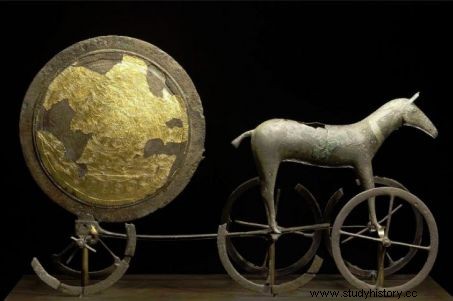The location and orientation of the mysterious Uffington Horse, etched on a chalky hill in southern England, is believed to be linked to the path of the sun.

Aerial view of the famous Uffington Giant Horse in southern England.
AGE OF THE BRONZE. From the hill of Dragon Hill which faces it, in the county of Oxfordshire, in the south of England, one can see galloping for more than 3000 years a gigantic horse engraved on a chalky eminence. About 110m long, the Uffington White Horse is one of the great human achievements of Bronze Age Europe, and one of the oldest prehistoric geoglyphs (ground drawing) in the world. with the colossal figures of Nazca in Peru. But why have such a giant been represented on the undulating reliefs of the Berkshire Downs chain? It has long been described by popular culture as a territorial symbol meant to be seen for miles or the emblem of an ancient chieftaincy. However, it is a completely different supported interpretation that has just been delivered for the magazine Antiquity *, archaeologist Joshua Pollard, from the University of Southampton (Great Britain).
For this specialist in British prehistory, the giant scarified in the green humus, whose dorsal line seems to follow the upper edge of an escarpment, would be a solar horse, in other words a device linked to the diurnal passage of the sun in the sky. “The stance and movement of this horse is indeed racing of the star in winter ”, thus specified Joshua Pollard.
 Observed from Dragon Hill on December 23, 2015, the Uffington White Horse appears to be pulling the solar star. © Joshua Pollard
Observed from Dragon Hill on December 23, 2015, the Uffington White Horse appears to be pulling the solar star. © Joshua Pollard
Very common in Bronze Age Europe, the theme of the mythical horse pulling the sun across the sky is found in many cultures, whether on rock carvings (petroglyphs), or the magnificent Trundholm chariot. discovered in 1902 in a swamp in Odsherred, Denmark (see photo ). Celtic coins also feature the very stylized equine silhouette found at Uffington.
 Trundholm Sun Chariot (XV
e
century BC). The golden side of the disc would represent the diurnal path of the sun, the other side, dark, the night path. © National Museum Copenhagen.
Trundholm Sun Chariot (XV
e
century BC). The golden side of the disc would represent the diurnal path of the sun, the other side, dark, the night path. © National Museum Copenhagen.
“The solar star pulled in the sky by a horse or a team during the day, or transported by boat or chariot in the underworld, at night, are recurring characteristics of Indo-European mythologies “, clarified Joshua Pollard. The new hypothesis proposed for the Uffington horse would thus offer, according to the British prehistorian, a connection between the cultural traditions of Great Britain and the rest of Europe.
*Antiquity :"The Uffington White Horse geogplyph as sun-horse", vol. 91, pp.406-420.
